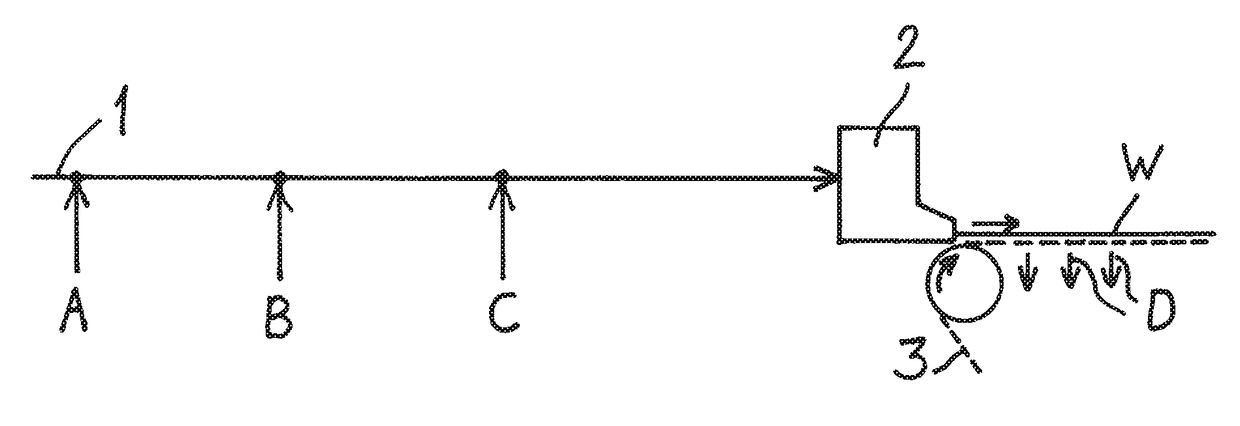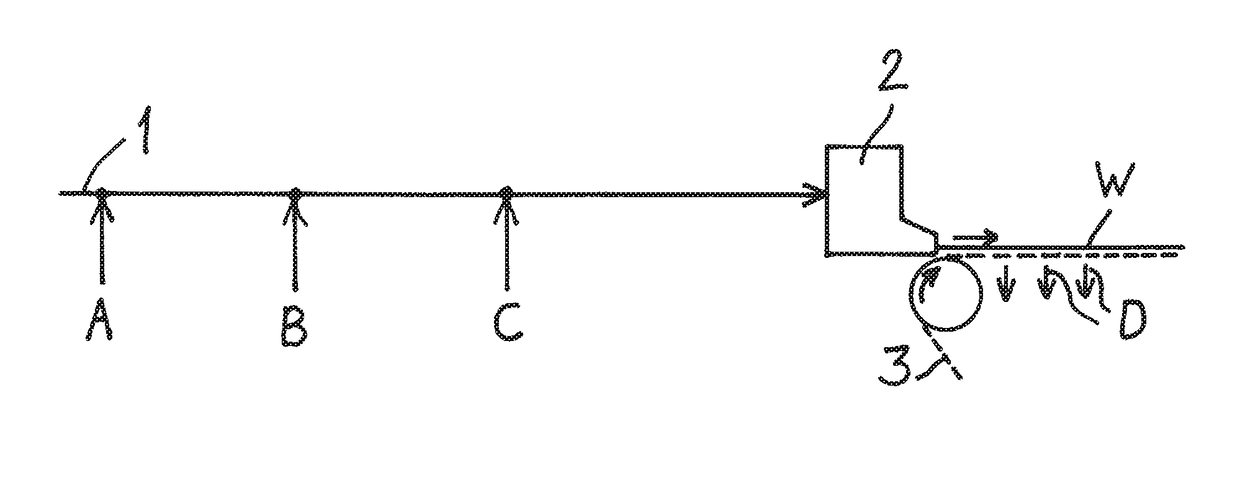Method for making paper product and paper product
a technology for paper products and fillers, applied in the directions of paper/cardboard, inorganic compound addition, reinforcing agent addition, etc., can solve the problems of poor retention of fillers, difficulty in increasing filler contents above 30 wt-% in paper products, and weakening of mechanical properties of paper products, so as to achieve the effect of increasing the affinity of fillers
- Summary
- Abstract
- Description
- Claims
- Application Information
AI Technical Summary
Benefits of technology
Problems solved by technology
Method used
Image
Examples
Embodiment Construction
[0019]In the method shown in the FIGURE, the furnish coming from the stock preparation system is denoted with arrow 1. The furnish flows in a so-called approach flow system in the short circulation of the papermaking machine after the wire pit, where it was diluted with water. Pumps and screens of the approach system are not illustrated. Fibres and fillers in the aqueous furnish can be fillers and fibres commonly used for paper and paperboard manufacture in a typical paper mill process, where the furnish is supplied to feeding device 2, which spreads the furnish evenly to a foraminous moving support 3 (forming fabric), on which the dewatering starts and the fibrous web W starts the formation. After dewatering and drying steps the result is a paper product.
[0020]Water initially removed from the web during the formation is denoted with downward arrows D. The filler content of this water D, which is circulated back to the stock preparation system, can be reduced by using the method.
[00...
PUM
| Property | Measurement | Unit |
|---|---|---|
| number-average diameter | aaaaa | aaaaa |
| length | aaaaa | aaaaa |
| diameter | aaaaa | aaaaa |
Abstract
Description
Claims
Application Information
 Login to View More
Login to View More - R&D
- Intellectual Property
- Life Sciences
- Materials
- Tech Scout
- Unparalleled Data Quality
- Higher Quality Content
- 60% Fewer Hallucinations
Browse by: Latest US Patents, China's latest patents, Technical Efficacy Thesaurus, Application Domain, Technology Topic, Popular Technical Reports.
© 2025 PatSnap. All rights reserved.Legal|Privacy policy|Modern Slavery Act Transparency Statement|Sitemap|About US| Contact US: help@patsnap.com


